Header logo
header top contact widget
Insurance Coverage & Payment Plans
Energy Drinks Are Erosive To Tooth Enamel
Posted on Jul 12, 2024 by William J. Claiborne, DDS MS
In the U.S., over one-third of adults ages 18 to 29 admit to being regular consumers of energy drinks. For those in the 30 to 49 age group, that number jumps to nearly 42%.
https://www.statista.com/forecasts/228168/energy-drinks-consumption-usa
While many adults like having an afternoon pick-me-up readily available through a beverage, there is growing concern regarding the potential of these drinks to erode tooth enamel.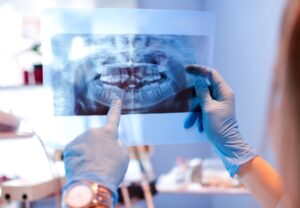
To begin, most energy drinks are high in sugar as well as highly acidic. The acidity is a particular problem because acid is destructive to tooth enamel as soon as it makes contact. Its damage begins as soon as it reaches enamel and continues with each sip.
The American public is likely unaware of just how acidic these energy drinks are. To acknowledge the extent of acidity in these beverages, the pH levels typically range from 1.5 to 3.3, which is exceptionally acidic. These include common brands such as TNT Energy Drink®, Red Bull®, and Monster Energy®.
Comparatively, fairly neutral levels for foods or beverages range 6 to 8 pH. The closer to 0, the more acidic, meaning the 1.5 – 3.3 levels of energy drinks are cause for concern. Because the pH level of the mouth is directly affected by the foods and drinks we eat, oral pH levels directly effect the health of teeth and gum tissues.
“Normal” saliva pH is generally 6.2 – 7.6. When the pH levels in your mouth go below 5.5, the higher acidity starts to break down the protective enamel on teeth, leaving you at a higher risk of developing cavities.
https://periodontalhealthcenter.com/blog/how-energy-drinks-affect-teeth-and-gums/t
As acidity of a liquid increases, the pH number rises. For example, water and milk have a pH of 7.0, very low acidity. Lemon juice has a pH of around 2.0. Battery acid has a pH of 0.0. With the numbers of energy drinks in the 1.5 to 3.3 range (Red Bull has a pH of 3.3 and Monster Energy has a pH of 2.7) erosion of tooth enamel is almost a given for regular consumers.
Because of the erosive effects to teeth from energy and sports drinks, a study was recently conducted to evaluate the true severity.
In the analysis, pH values, titratable acidity, and buffering capacity of energy beverages were measured. For the erosive test, specimens were immersed in the beverages for 30 minutes at room temperature with gentle shaking (to mimic consumption). Loss of surface hardness was calculated at various points of the time period.
The energy drinks had pH values ranging from 2.36 to 3.41 (with the lowest acidity for Monster Energy® and the highest for TNT Energy Drink®). All the energy drinks were shown to be erosive to tooth enamel with TNT Energy Drink® showing the worst behavior.
Journal of Clinical & Experimental Dentistry
https://www.ncbi.nlm.nih.gov/pmc/articles/PMC8601704/
It’s not unusual for some people to consume up to four energy drinks a day, which creates a flood of acid coating teeth several times in extended periods (since these drinks are typically consumed over a period of time rather than downed quickly). When you consider that these drinks can be as corrosive as battery acid, it’s easy to see how tooth enamel can be vulnerable.
Ninety-six percent of tooth enamel is mineral content. Tooth enamel is the outer protective coating of teeth. Tooth enamel is the hardest substance in the body and has the most minerals in the body.
Signs that your tooth enamel is damaged and eroded are:
• Sensitive teeth
• Teeth turning yellow
• Transparent tips of teeth
• Teeth developing cracks or dents
• Cavities
Tooth enamel is irreplaceable. Once it’s gone, it’s gone forever. Protecting your teeth and gums requires more than just a couple of brushings per day. Good dental hygiene depends on several factors including what you eat/drink, genetic make-up, lifestyle, personal hygiene and susceptibility to dental problems in general. However, subjecting your teeth to frequent onslaughts of acid washes is going to eventually catch up to you in ways that are expensive and time-consuming to repair.
And, before rushing to the sink after downing an energy drink to ward off potential damage, hold off a bit or you may simply add to the damage. If you brush your teeth after consuming anything acidic (including citrus, colas, coffee, tea, tomatoes), the bristles of a tooth brush and abrasive substance of toothpaste against weakened enamel will merely add to the destruction.
Wait at least 20 minutes after eating and drinking so you don’t damage the enamel. This allows the acid levels to re-elevate. It is wiser to drink a glass of water to wash away food residue and acid remaining on teeth or in your mouth.
If you have not received regular dental care or have concerns that your oral health is at risk (perhaps due to the effects of what you eat, your overall health, or things like smoking, etc.), it is recommended that you have a thorough periodontal examination.
A periodontist is a dentist who has continued in education to specialize in the diagnosis and treatment of all areas of the tissues in the mouth. In addition to treating all phases of periodontal (gum) disease, we are uniquely qualified to reshape gum tissues. We also have advanced training in the diagnosis and placement of dental implants.
Although gum disease can begin without obvious signs or symptoms, the most common are:
• Red, swollen or tender gums
• Seeing blood in the sink when brushing
• Receded gums
• Loose or separating teeth
• Pus pockets on gum tissues
• Sores in the mouth
• Persistent bad breath
If you are experiencing symptoms of gum disease or have not received regular dental care, call 828-274-9440. We’ll arrange a periodontal exam in our comfortable Asheville periodontal office. Oral and I.V. sedation (“twilight sleep”) are available and safely administered.
If you have already experienced tooth loss, let’s discuss replacing missing teeth with dental implants. Designed to last a lifetime, dental implants are the ideal tooth replacement option and restore the natural look feel and function like that of natural teeth.
Our Western NC periodontal dental office offers some of the industry’s most advanced technology in dentistry including that to diagnose and select (and guide) ideal implant placement angles and depths.
You can also begin with a consultation appointment to get to know us and learn about our advanced technology, often saving our patients treatment time while enhancing comfort.
If financial constraints are a concern, ask about our easy payment plans. These can break treatment fees into monthly payments that are manageable to most budgets.
Dental Implants Gaining Ground In Tooth Replacement Preferences
Posted on Jun 20, 2024 by William J. Claiborne, DDS MS
For adults who have lost natural teeth, I have good news and bad news. Let’s get the bad news out of the way first…
Missing natural teeth, whether replaced by a full denture, partial denture, bridge, or not being replaced at all, can lead to problems that impact your oral health, even the lifespan of remaining natural teeth. I’ll address those problems further on, but let’s move on to some good news.
According to the National Institutes of Health & Nutrition Examination, by 2026 nearly 23% of adults are estimated to opt for dental implants as their choice to replace teeth.
https://www.ncbi.nlm.nih.gov/pmc/articles/PMC6854267/
This is great news for our rapidly aging population. Dental implants come with a number of advantages that effect overall health. These include:
• The ability to bite and chew food thoroughly, aiding digestion. It has been found that people who wear dentures take more medications and have more gastro-intestinal problems.
• Eating comfort so a diet of fibrous and healthy food choices can provide sufficient vitamins, minerals and protein.
• Confidence in social situations, which (according to an article by the Mayo Clinic News Report): “Socializing not only staves off feelings of loneliness, but also it helps sharpen memory and cognitive skills, increases your sense of happiness and well-being, and may even help you live longer.”
• Helping to support remaining natural teeth by preserving jaw bone mass. When a tooth root is removed from the jaw bone where it was once supported, a process known as resorption begins. Once underway, it continues at an ever-increasing pace, accelerating with each passing year. As the bone shrinks, adjacent teeth are subject to movement and root damage. On average, the next teeth you’ll most likely lose are those bordering areas of missing teeth.
Since the mid to late-60’s, dental implants have been fine-tuned and perfected. Today, there are nearly 40 different types of dental implants. These systems are designed to accommodate specific needs and goals.
For instance, using just 4 or 6 implants placed at unique angles, the All on 4 Dental Implant system is able to evenly distribute the forces of biting and chewing in minimal bone. This is ideal for people who have experienced severe bone loss, helping them avoid the need for bone rebuilding procedures.
With all the great reasons to replace missing teeth with dental implants, an important decision in having a successful outcome is in who places your implants.
Although some generalists take courses in dental implant placement, many of these are offered by the manufacturers of particular implant systems. Thus, these courses primarily focus on the implant available through this one company, which may not be the most ideal choice for your specific needs.
This is why many dentists refer the placement portion of implants to a periodontal specialist. A periodontist has advanced training and skills in the diagnosis and placement of all types of dental implants. This means that this dental specialist can determine which implant system will work best for your individual needs.
Another benefit of a periodontist’s skills for implant patients is in their ability to conduct additional procedures, such as a sinus lift, needed in treatment. This ensures the patient’s implant(s) are positioned in the proper bone mass at a healthy depth so it does not pose risks to surrounding structures.
As a specialist in treating all stages of gum disease, a periodontist is also able to help optimize your gum health prior to implant placement. By pretreating any periodontal inflammation, the implant has a healthy foundation from the very beginning.
In our Western NC periodontal dental office, we incorporate the advantages of some of the most advanced technology in dentistry; many of these options which are not readily available in other dental offices in our region. These computerized marvels offer advantages to patients in helping to minimize treatment needs, speed healing, and optimize comfort.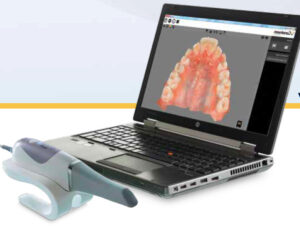
These include laser dentistry, Cone Beam imaging, Cone Beam computerized tomography imaging, intraoral scanning, and computerized dental implant placement.
Additionally, in our Asheville periodontal dental office, we offer oral and IV sedation (“twilight sleep”) for optimal comfort. Both have an amnesiac effect, leaving most with little or no memory of treatment afterward. Here, anesthesia is overseen by a Medical Doctor (MD) who is a board certified Anesthesiologist. With both sedation options, patients are closely monitored with advanced safety equipment throughout treatment.
If you’ve considered dental implants, take the first step to a new you today! Begin by calling our Asheville periodontal dental office to speak with a friendly staff member at: 828-274-9440.
If the cost of dental implants has prevented you from choosing this optimal tooth replacement option, most of our payment plans require no down payment, are interest-free, and have no prepayment penalty. Feel free to ask about those during a consultation.
Men – Take On The Challenges In Oral Health Upkeep.
Posted on May 05, 2024 by William J. Claiborne, DDS MS
If you’re a male, or have ones in your life you love, the following information will be good-to-know. This is filled with reasons why you (or they) should make oral health a priority.
Let’s begin with the hazards of gum disease. According to a survey by the Centers For Disease Control & Prevention (CDC), only 66% of males brush their teeth twice or more a day (compared with 86% of females).
Flossing stats weren’t much better, but that proved to be the case with both sexes. Only 49% in the survey said they were daily flossers with 1 out of 3 with the misconception that seeing blood in the sink when brushing is normal (it’s not).
Periodontal (gum) disease is the result of an over-accumulation of oral bacteria. It begins with Gingivitis.
Gingivitis is caused by the toxins in plaque. Plaque is the sticky layer of bacteria that coats teeth and gums. When not removed (through regular brushing and flossing), it can harden into a form known as tartar (that can no longer be brushed away).
Gingivitis is typically treated with a professional cleaning and thorough at-home care. Some cases may require root planing and deep scaling procedures to rid the gum tissue of debris pockets (pus-filled bulges on gum tissues). This procedure reaches bacteria that has penetrated beneath the gum line.
The next stage of gum disease is known as chronic periodontal disease. The most common form of gum disease, this is characterized by inflammation beneath the gum line with damage to gums and bone tissue. At this level, treatment includes scaling and root planing along with antimicrobial treatments. In some stages, surgical procedures are also necessary for pocket reduction. Some cases require tissue grafts to strengthen the bone and improve the appearance of the smile.
As gum disease worsens, it moves to periodontitis, a more aggressive stage of gum disease. Periodontitis has similar symptoms to those listed above but tends to progress at a faster pace. Because this stage of gum disease is more difficult to combat, treatment is the same treatment needed for chronic periodontal disease along with surgical intervention. A combined treatment of scaling, root planing, antimicrobial, and surgical procedures may save oral tissue and bone.
Periodontal disease is the nation’s leading cause of adult tooth loss, affecting over 47% of adults ages 30 and over. Research has found that gum disease is higher in men (over 56%) than in women (38%).
The Centers for Disease Control & Prevention (CDC) notes that men are typically less likely to sufficiently maintain their oral health. Oral health should be especially concerning for men since they have some challenging odds against them as far as health statistics go. These include:
• Men have higher rates of periodontal (gum) disease, tooth loss, and oral infections. Because statistics show that men typically have poorer dental habits than women, they tend to have more dental health problems. Men can’t blame this on biological predisposition as the statistic is based upon lifestyle choices (such as not brushing, etc).
• Men tend to have higher blood pressure, putting them at an increased risk for heart disease later in life. Medications that treat these conditions can cause dry mouth, which ups the risks to their oral health.
• Elderly men typically have fewer teeth than women of the same age, and need dentures more than women. Although research shows a correlation between tooth loss and body mass index, elderly men having few teeth is the result of poor dental habits and attention to dental health accumulated over time.
• Oral cavity and oropharyngeal (throat) cancers are twice as common in men than in women. It is suspected that this is due to men being more likely to have a history of tobacco and alcohol use.
• HPV-related oropharyngeal cancers occur more often in men. Human Papilloma Virus (HPV) is the most common sexually transmitted infection in the U. S. HPV can lead to certain types of cancer and is thought to cause 70% of oropharyngeal cancers in the U.S. The development of oropharyngeal cancer due to HPV is about three times less prominent in females than in men of the same age.
While a healthy smile is important to both genders, older adults should pay particular attention to having a good oral health. By CDC estimates, approximately 13% of adults ages 65 – 74 have no teeth. For people ages 75 and older, that number jumps to 26% (over one-fourth!).
Too, ALL ADULTS should be concerned with the overall health repercussions related to the inflammatory bacteria of gum disease. Able to enter the bloodstream through tears in diseased oral tissues, these bacteria can trigger inflammatory reactions elsewhere in the body. This has been associated with the development or worsening of heart disease, diabetes, some cancers, diabetes, arthritis, erectile dysfunction, elevated PSA levels, and respiratory diseases.
Also applicable to all adults, the Journal of Periodontology shared nine risk factors for tooth loss due to periodontal (gum) disease, including …
• Being over age 35
• Being male
• Not having professional dental care
• Not brushing teeth
• Smoking
• Being diabetic
• Having high blood pressure
• Having rheumatoid arthritis (RA)
Treating gum disease before it becomes severe can be done comfortably and affordably. In our Asheville periodontal dental office, we use cutting-edge technology that often minimizes treatment needs, lessens healing time, and optimizes comfort.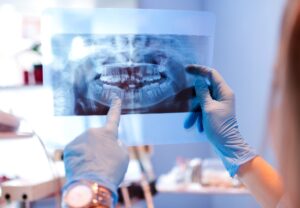
If dental fears have caused you to delay or avoid having regular dental care, consider beginning with a consultation. As a periodontist, I know many individuals like that this occurs in a comfortable, private consultation room. We can discuss the use of oral or I.V. sedation (sleep dentistry, or “twilight sleep”) during procedures. These are administered safely with patients monitored with advanced safety equipment throughout treatment.
If financial constraints are an obstacle in receiving treatment, we offer several payment plans. Most are interest-free with no down payment required (for qualified individuals).
Call 828-274-9440 to begin with a private consultation to discuss your best options. New patients are welcome and a referral is not needed.
Sources:
https://www.perio.org/consumer/gum-disease-and-men
https://www.perio.org/consumer/gender-differences
https://www.ncbi.nlm.nih.gov/pmc/articles/PMC4544688/
https://pubmed.ncbi.nlm.nih.gov/20116657/
https://www.cancer.org/cancer/oral-cavity-and-oropharyngeal-cancer/causes-risks-prevention/risk-
https://www.colgate.com/en-us/oral-health/hiv-aids-and-stds/dental-care-hpv-and-men#
Healthy Gums Advantageous To A Healthier YOU!
Posted on Apr 22, 2024 by William J. Claiborne, DDS MS
Periodontal (gum) disease and subsequent tooth loss has damaging effects to an individual, far beyond the mouth. When this was suspected decades ago, it prompted national agencies to track the oral health of the U.S. population. Using this extensive data, studies have revealed some interesting statistics, including how various age groups fare when it comes to oral wellness.
The following is mostly information pulled from the National Institutes of Health’s (NIH) “Oral Health In America” report. Released in December 2021, the findings were the culmination of years of research assembled by more than 400 contributors.
On a positive note, the percentage of Americans who have experienced tooth loss has declined since the 1970’s. As of 2016, complete tooth loss has fallen by more than 75% for adults between the ages of 65 – 75 years. Unfortunately, there is not good news when it comes to tooth decay – for nearly any adult age group.
For adults between the ages of 20 – 64, cavities have affected 90% and gum disease exists for nearly 50% of adults aged 45 – 64 years. This should be a concern for every American. This is because research has determined that the bacteria of periodontitis (advanced gum disease) can trigger or worsen a long list of serious health problems.
The list includes:
• Stroke
• Coronary Artery Disease
• Arthritis
• Diabetes
• Preterm & low birth weight babies
• Some Cancers (including oral and pancreatic)
• Alzheimer’s disease
• Impotency, Erectile Dysfunction (ED)
• Prostatitis (elevated PSA levels)
In addition to poor oral hygiene routines at home and avoiding regular dental cleanings and exams, high-risk behaviors (such as use of tobacco, opioids, and alcohol) accentuate the risks of gum disease.
Although gum disease can begin without obvious signs or symptoms, the most commonly noticed are:
• Red, swollen or tender gums
• Seeing blood in the sink when brushing
• Receded gums
• Loose or separating teeth
• Pus pockets on gum tissues
• Sores in the mouth
• Persistent bad breath
While the report found that there are stark differences in adult groups who had less access to having regular oral health care, disparities also stem from underlying economic, demographic, and societal inequities.
Below are some of the oral health variations pertaining to certain groups.
ADOLESCENTS
During the past 20 years, the percentage of adolescents (ages 12 − 19) having at least one molar with a sealant applied has nearly tripled, from 18% to 48%. That’s a good thing. Even so, there has been no decline in untreated tooth decay in adolescents since the last surgeon general’s report twenty years ago.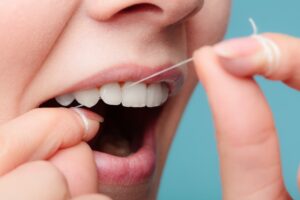
High caries (cavities in teeth) experienced in early childhood is the strongest indicator of caries problems that will be experienced in adolescence and adulthood. This means that when the factors contributing to developing cavities in childhood persist, the incidence of caries affecting permanent teeth will continue to increase during adolescence. Likewise, misalignment of teeth that exist or develop during adolescence can substantially impact eating, speech, gum health, and even psycho-social development. (Imagine a teen with teeth so mispositioned that they are ridiculed by peers.)
OLDER AMERICANS
There is good news for our older population (Americans over the age of 65). Their overall oral health has significantly improved over the past two decades with fewer teeth being extracted. Additionally, the proportion of the population with edentulism (no remaining natural teeth) is at an all-time low.
The not-so-great news… tooth loss remains a problem for older adults. Today, 1 in 6 Americans have no remaining natural teeth. At this rate, by the year 2030 (just 6 years from now), the 65-&-over age group without teeth will increase to 1 in 5.
For adults over the age of 75, the challenges are even greater. Over 54% have fewer than 21 remaining teeth with the number increasing to 80% for those living in poverty. With age also comes the increased prevalence of systemic diseases that may impact the mouth, making older adults more susceptible to oral health issues. (This includes heart disease, diabetes, arthritis, etc.)
Fortunately, things are moving in a positive direction for older adults, with more keeping their teeth than any previous generation. This has largely been the result of having increased attention on the benefits of prevention and improvements in treatments for gum disease and cavities, along with a decrease in the rate of smoking. (About 8 of every 100 adults – 8.3% – of adults 65 years and older were reported to smoke in 2023.)
WOMEN
Women have unique oral health concerns due to changing hormone levels based on menstrual cycles, pregnancy, and menopause. These fluctuations can raise the risk of oral problems that effect teeth or gums. Health issues, such as diabetes, can also affect the oral health of females.
To keep your teeth healthy, it is important to remove dental plaque. This is a sticky, colorless film of bacteria that coats teeth and gums. Plaque buildup can cause tooth decay and gum disease.
Even teeth that already have fillings are at risk for tooth decay. Plaque can build up underneath a chipped filling and cause new decay. And if there are areas in your mouth where your gums have pulled away from the teeth (known as receded gums or gum recession), the exposed tooth roots can decay as well.
It’s important – for all ages – to be committed to their oral hygiene time at the sink, at least twice a day. Devoting these minutes to the care of your teeth and gums will pay off in future years, helping to minimize costs for dental repairs and time in treatment. And, when early ages get into the habit of an oral care routine at home, they are more likely to carry that into adulthood.
Here are some easy brushing tips:
• Use fluoride toothpaste, which is an ingredient of many products. Fluoride protects teeth from cavities, helping to strengthen the tooth’s hard outer surface – the enamel.
• Angle the bristles toward the gumline so they can sweep away bacteria between the gums and teeth.
• Brush gently using small, circular motions. Do not scrub hard back and forth, which can wear down tender gum tissues and wear away tooth enamel.
• Brush all sides of each tooth and the tops (where debris and bacteria can hide within grooves).
• Brush your tongue, especially towards the back where the majority of bacteria embed. Swish well with water at least twice afterwards.
Cleaning between teeth to remove plaque is also part of a good oral hygiene routine. If plaque is not removed, some of it can harden below the gum line and irritate the gums. The gums become red, swollen, and may bleed easily. These are signs of gingivitis. Gingivitis caused by plaque buildup is a mild form of gum disease, and you can usually reverse it with daily brushing and flossing.
If plaque stays on your teeth for too long, it can harden. This hardened plaque is called calculus, or tartar. The only way to remove tartar is to have your teeth cleaned by a dentist or dental hygienist. If the tartar is not removed, the gingivitis can get worse and lead to more severe gum (periodontal) disease. In advanced stages, gum disease causes sore, bleeding gums; painful chewing problems; loose teeth; and even tooth loss.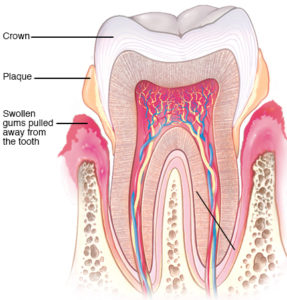
Here are some additional ways to keep a healthy smile with practical measures.
- Floss to remove plaque, and food particles, from between your teeth.
- Visit the dentist for routine check-ups and professional cleaning. If you are at a high risk for tooth decay (for example, if you have a dry mouth because of medicines you take), your dentist or dental hygienist may give you a fluoride treatment, such as a varnish or foam during the office visit.
- Drink fluoridated water. Drinking water with the right amount of fluoride protects your teeth throughout the day.
- Don’t smoke. Smoking increases your chance of gum disease. If you smoke and want to quit, there are many resources to help you: FDA’s Center for Tobacco Products, CDC’s Quit Smoking website, and the BeTobaccoFree.gov website.
- If you are planning to become pregnant, have a dental checkup. Because of hormonal changes, pregnant women may develop gingivitis and experience gums that are swollen and bleed easily. During pregnancy, it is especially important to practice good oral hygiene to maintain the health of your gums.
- Eat a diet that is low in sweets and sugary drinks.
A periodontal specialist is your best advocate in restoring or maintaining healthy gums. In addition to the skills in treating all stages of gum disease (from gingivitis to periodontitis), a periodontist specializes in the selection and placement of dental implants.
If you have signs or symptoms that may be indicative of gum disease, please know this disease will only worsen without treatment. Call 828-274-9440 to schedule an appointment or ask to begin with a consultation.
If dental fear is a concern, we can discuss oral or IV sedation options. These are administered safely with skilled staff members who use advanced safety equipment throughout your care.
Additionally, if you’ve delayed care due to cost, we office several payment plans that many patients find helpful. These plans can break costs into monthly payments, often with no down payment required.
Sources:
https://www.nidcr.nih.gov/health-info/oral-hygiene
https://www.nidcr.nih.gov/research/oralhealthinamerica/section-2b-summary
https://www.nidcr.nih.gov/research/oralhealthinamerica/section-3b-summary
https://www.nidcr.nih.gov/research/oralhealthinamerica/section-3a-summary
https://www.womenshealth.gov/a-z-topics/oral-health
https://www.cdc.gov/tobacco/data_statistics/fact_sheets/adult_data/cig_smoking/index.htm
Recent Posts
Categories
Archives
- September 2024
- August 2024
- July 2024
- June 2024
- May 2024
- April 2024
- March 2024
- February 2024
- January 2024
- December 2023
- November 2023
- October 2023
- September 2023
- August 2023
- July 2023
- June 2023
- May 2023
- April 2023
- March 2023
- February 2023
- January 2023
- December 2022
- November 2022
- October 2022
- September 2022
- August 2022
- July 2022
- June 2022
- May 2022
- April 2022
- March 2022
- February 2022
- January 2022
- December 2021
- November 2021
- October 2021
- September 2021
- August 2021
- July 2021
- June 2021
- May 2021
- April 2021
- March 2021
- February 2021
- January 2021
- December 2020
- November 2020
- October 2020
- September 2020
- August 2020
- July 2020
- June 2020
- May 2020
- April 2020
- March 2020
- February 2020
- January 2020
- December 2019
- November 2019
- October 2019
- September 2019
- August 2019
- July 2019
- June 2019
- May 2019
- April 2019
- March 2019
- February 2019
- January 2019
- December 2018
- November 2018
- October 2018
- September 2018
- August 2018
- July 2018
- June 2018
- May 2018
- April 2018
- March 2018
- February 2018
- January 2018
- December 2017
- November 2017
- October 2017
- September 2017
- August 2017
- July 2017
- June 2017
- May 2017
- April 2017
- March 2017
- February 2017
- January 2017
- December 2016
- November 2016
- October 2016
- September 2016
- August 2016
- July 2016
- June 2016
- May 2016
- April 2016
- March 2016
- February 2016
- January 2016
- December 2015
- November 2015
- October 2015
- September 2015
- August 2015
- July 2015
- June 2015
- May 2015
- April 2015
- March 2015
- February 2015
- January 2015
- December 2014
- November 2014
- October 2014
- September 2014
- August 2014
- July 2014
- June 2014
- May 2014
- April 2014
- March 2014
- February 2014
- January 2014
- December 2013
- November 2013
- October 2013
- September 2013
- August 2013
- July 2013
- June 2013
- May 2013
- April 2013
- March 2013
- February 2013
- January 2013
- December 2012
- November 2012
- October 2012
- September 2012
- August 2012
- July 2012
- June 2012


